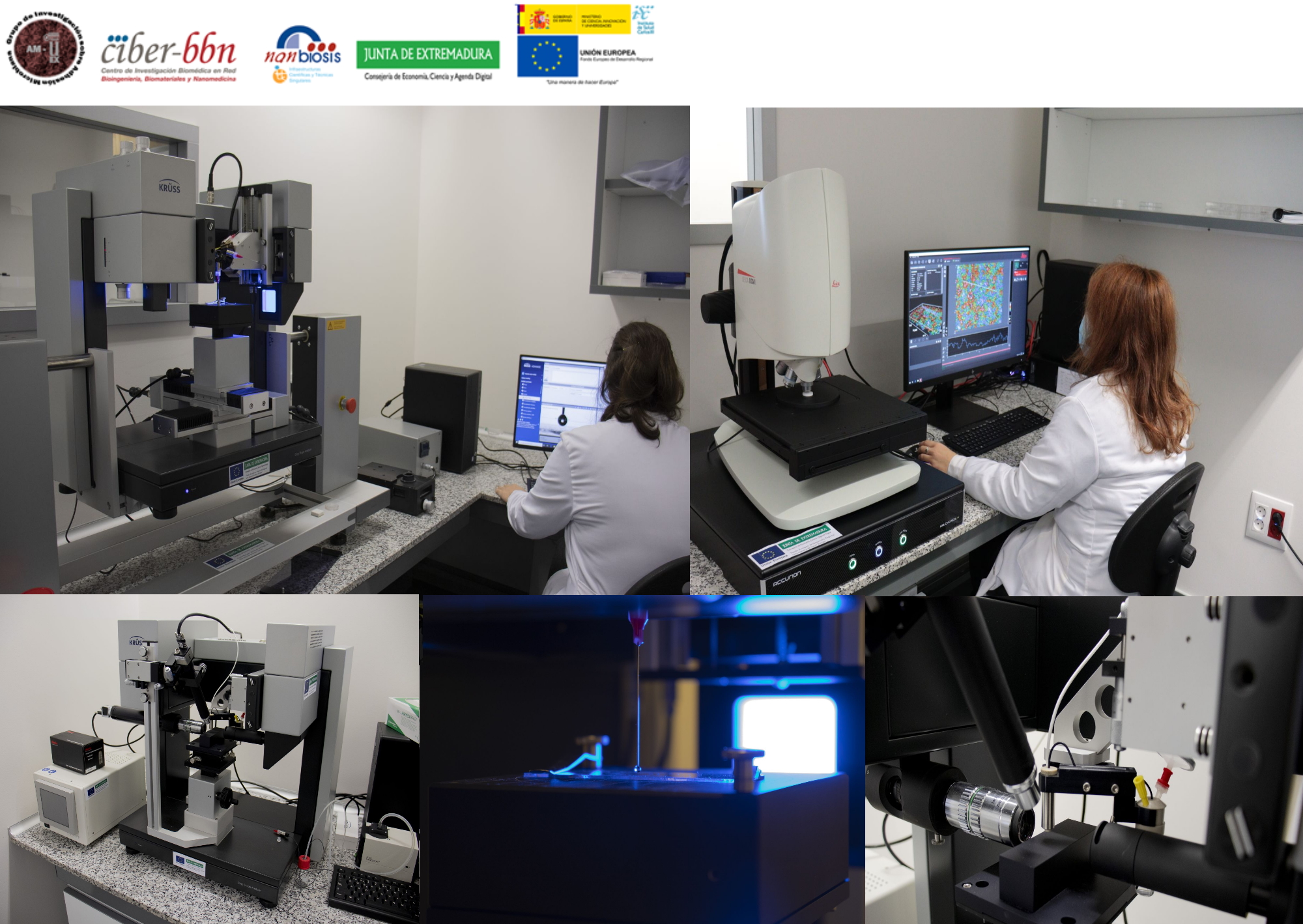
NANBIOSIS unit 16 Surface Characterization and Calorimetry Unit form CIBER-BBN and University of Extremadura offers the performance of tasks of physical-chemical characterization of surfaces using techniques such as ellipsometry, calorimetry, X-ray photoelectronic spectroscopy (XPS) and detection of secondary ions by means of mass spectrometry by time of flight (Tof-SIMS). Recently, new equipment acquired through the execution an investment of 1.3 million euros, cofinanced with FEDER funds, the Ministry of Economy and Competitiveness and Junta de Extremadura, Regional Ministry of Economy, Science and Digital Agency, througth the project FICTS1420-14-09. These equipments are a microdroplet and picodroplet contact angle goniometry system and an optical profilometry system.
Equipment acquired
PEAK AND MICRO DROP GONIOMETRY SYSTEM
This system allows to measure contact angles automatically, controlling by software, the deposition of drops of different liquids, their analysis and the orientation of the substrate, as well as pending drops. In addition, the microdroplet system has a tilting base that allows the samples to be tilted by at least 90o. It also includes a thermostatic chamber, for temperature changes of the sample with a range between 5 and 90 ºC, and a chamber for humidity control.
Obtaining surface tension, through contact angle measurements, is a factor to consider in technologies of biomedical interest such as implants and other materials that must be in contact with biological fluids. In these systems the contact angle is related to the wettability, the hydrophobicity of the surface and the adhesion capacity of substances such as proteins or other compounds on the surfaces.
In the case of pico-droplet measurements, the system allows to very precisely dose drops much smaller than in the previous case, which can be as low as 20 picoliters, as well as to analyze their shape to measure the contact angle. This fact solves the problem of measuring wettability in very small structures, such as capillaries, microchips, joints created in the union of two materials, etc.
PROFILOMETRY SYSTEM
The system allows the roughness of a multitude of surfaces to be measured by an optical method that does not make any changes to the sample. With the operating base of a confocal microscope commonly used in different fields of science, it allows to create high-resolution 3D images quickly and automatically, as well as obtaining color images thanks to the use of three LEDs: Red, Green and Blue. With the available objectives, it is possible to measure from more macroscopic samples such as screws used as dental implants to be able to observe bacterial colonies composed of bacteria the size of a micron. This will make it possible to measure the roughness of any sample covering the range of roughness between a magnifying glass, which gives a more macroscopic view, and the atomic force microscope capable of measuring nanometric roughness (10 ^ -9 m). In addition, this equipment also works as an interferometer that allows to measure the roughness with greater precision of mirror polished samples in a simple way, obtaining images of higher resolution than any confocal technique.








